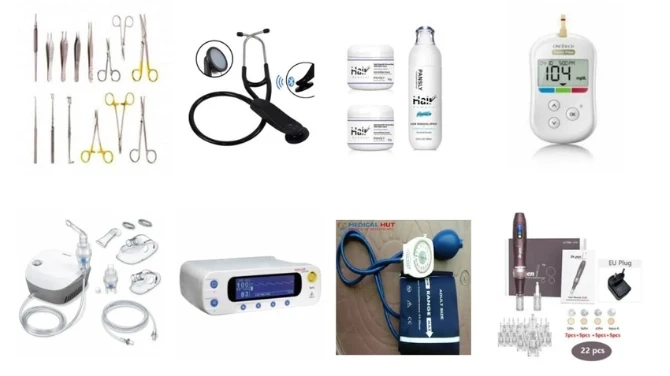Telemedicine, the integration of technology into healthcare to provide remote clinical services, has been a transformative solution for healthcare challenges worldwide. In Pakistan, a country with stark disparities between urban and rural healthcare facilities, telemedicine has emerged as a game-changer, particularly in 2025. This article explores the current state of telemedicine in Pakistan, its impact, challenges, and future prospects, supported by fact-based insights and data.
Current State of Healthcare in Pakistan
Pakistan’s healthcare system is characterized by limited resources, unequal access, and underfunding. With 64% of the population living in rural areas (Pakistan Bureau of Statistics, 2025), access to quality healthcare is a significant challenge. According to the Pakistan Health Report 2025, urban centers like Karachi, Lahore, and Islamabad enjoy better healthcare infrastructure, while rural areas struggle with:
- Shortage of Medical Professionals: The doctor-to-patient ratio in rural Pakistan is 1:4,500, far below the WHO recommendation of 1:1,000.
- Limited Healthcare Facilities: Only 30% of rural health units are fully operational.
- Geographical Barriers: Remote locations make it difficult for residents to access urban hospitals.
Telemedicine is emerging as a solution to address these gaps, leveraging technology to connect patients in remote areas with urban healthcare facilities.
What is Telemedicine?
Telemedicine uses telecommunication and digital platforms to deliver healthcare services. This includes:
- Video Consultations: Remote interactions between doctors and patients.
- Mobile Health (mHealth): Use of mobile applications to monitor and manage health.
- Remote Monitoring Devices: Tools that allow physicians to track patient vitals from a distance.
- Electronic Health Records (EHRs): Digitized medical records accessible across locations.
Telemedicine in Pakistan: A Growing Trend
Telemedicine in Pakistan is rapidly evolving in 2025, driven by increased internet penetration, smartphone usage, and government initiatives. According to the Pakistan Telecommunication Authority (PTA), internet penetration reached 55% in 2025, up from 48% in 2020. The government’s Digital Pakistan initiative has also prioritized telemedicine as a key area for growth.
- Urban Outreach to Rural Areas: Platforms like Oladoc, DoctHERs, and Sehat Kahani are connecting urban doctors with rural patients through video consultations.
- Government Telemedicine Centers: Over 500 centers have been established nationwide, providing basic healthcare services to underserved regions.
- Private Sector Contributions: Medical Hut offers a range of telemedicine devices, making it easier for rural clinics to adopt modern technology.
Impact of Telemedicine on Rural Healthcare
Telemedicine is reshaping healthcare delivery in rural Pakistan by:
- Improving Accessibility
- Rural patients can consult specialists without traveling to urban centers.
- Services like tele-ICUs and remote diagnostics have reduced the burden on urban hospitals.
- Reducing Costs
- Eliminates travel expenses for patients.
- Affordable consultation fees via telemedicine platforms.
- Enhancing Quality of Care
- Remote monitoring devices allow for continuous health tracking.
- Instant access to urban specialists ensures timely interventions.
- Capacity Building
- Training programs for rural health workers via digital platforms.
- Introduction of teleradiology and tele-pathology services.
Challenges in Implementing Telemedicine in Pakistan
Despite its potential, telemedicine in Pakistan faces several obstacles:
- Technological Barriers
- Limited internet access in remote areas.
- Poor digital literacy among rural populations.
- Regulatory Hurdles
- Lack of clear telemedicine policies and data protection laws.
- Licensing issues for telemedicine practitioners.
- Cultural Resistance
- Skepticism towards digital healthcare solutions.
- Gender barriers restricting women’s access to telemedicine.
- Infrastructure Gaps
- Insufficient availability of telemedicine devices and tools.
- Dependence on urban suppliers for equipment.
Telemedicine Success Stories in Pakistan
- Sehat Kahani
- This platform connects female doctors with underserved communities.
- Over 500,000 patients treated via telemedicine by 2025.
- Punjab Government’s Telemedicine Project
- Over 200 telemedicine centers established, providing free consultations.
- More than 1 million patients served since its inception in 2020.
- Medical Hut’s Contribution
- Supplies affordable telemedicine kits and remote monitoring devices.
- Enhances the adoption of telemedicine in rural health units.
Future Prospects of Telemedicine in Pakistan
The future of telemedicine in Pakistan looks promising, with projections indicating:
- Increased Adoption: By 2030, over 70% of rural health units are expected to integrate telemedicine.
- Improved Internet Connectivity: Expansion of 5G services will enable seamless telehealth consultations.
- Policy Frameworks: The government is working on a National Telemedicine Policy to standardize services.
- Public-Private Partnerships: Collaborations between the government and platforms like Medical Outlet will drive innovation.
Conclusion
Telemedicine is revolutionizing healthcare delivery in Pakistan, bridging the gap between urban and rural areas. With increasing internet penetration, supportive government initiatives, and contributions from private entities like Medical Hut, telemedicine is set to transform Pakistan's healthcare landscape in 2025 and beyond. By addressing challenges such as technological barriers and cultural resistance, Pakistan can unlock the full potential of telemedicine, ensuring equitable healthcare for all.
References
- Pakistan Bureau of Statistics, 2025.
- Pakistan Telecommunication Authority Annual Report, 2025.
- WHO Health Workforce Report, 2025.
- Sehat Kahani Impact Report, 2025.
- Government of Punjab Health Initiatives, 2025.


